- Browse
- Data Analysis With Python
Data Analysis With Python Courses
Data Analysis with Python courses can help you learn data manipulation, statistical analysis, data visualization, and machine learning basics. You can build skills in working with datasets, interpreting results, and communicating findings effectively. Many courses introduce tools like Pandas for data handling, Matplotlib and Seaborn for visualization, and Scikit-learn for implementing machine learning algorithms. These skills and tools empower you to analyze complex data sets and derive actionable insights across various domains.
Popular Data Analysis With Python Courses and Certifications
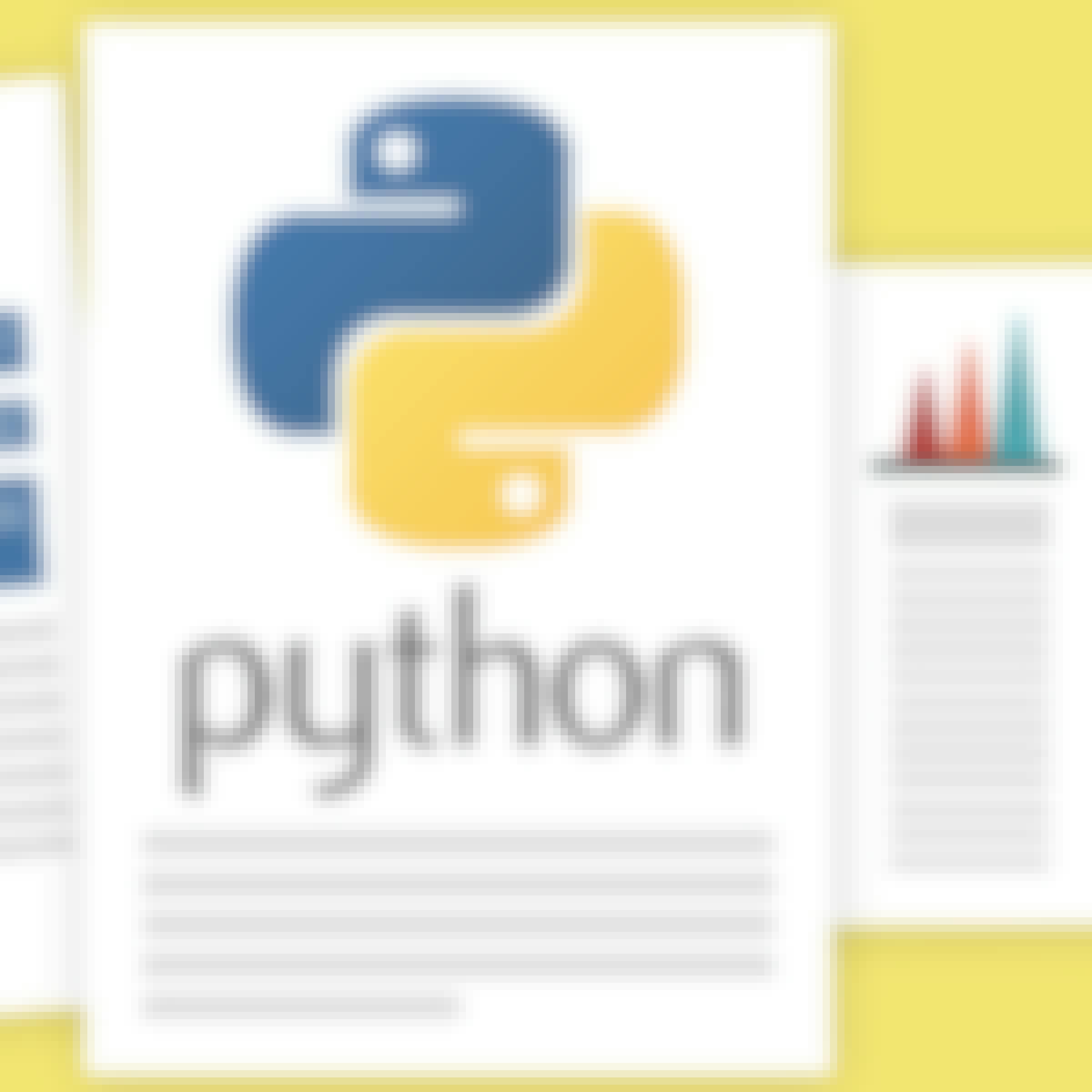 Status: Free TrialFree Trial
Status: Free TrialFree TrialSkills you'll gain: Exploratory Data Analysis, Model Evaluation, Data Transformation, Data Analysis, Data Cleansing, Data Manipulation, Data Import/Export, Predictive Modeling, Data Preprocessing, Regression Analysis, Data Science, Statistical Analysis, Pandas (Python Package), Scikit Learn (Machine Learning Library), Data-Driven Decision-Making, Matplotlib, Data Visualization, NumPy, Python Programming
4.7·Rating, 4.7 out of 5 stars20K reviewsIntermediate · Course · 1 - 3 Months
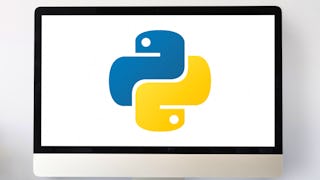 Status: Free TrialFree Trial
Status: Free TrialFree TrialSkills you'll gain: Data Import/Export, Programming Principles, Web Scraping, File I/O, Python Programming, Jupyter, Data Structures, Pandas (Python Package), Data Manipulation, JSON, Computer Programming, Restful API, NumPy, Object Oriented Programming (OOP), Application Programming Interface (API), Automation, Data Analysis
4.6·Rating, 4.6 out of 5 stars43K reviewsBeginner · Course · 1 - 3 Months
 Status: NewNewStatus: Free TrialFree Trial
Status: NewNewStatus: Free TrialFree TrialSkills you'll gain: Pandas (Python Package), NumPy, Data Manipulation, Data Preprocessing, Package and Software Management, Data Analysis, Data Transformation, Data Integration, JSON, Object Oriented Programming (OOP), Data Wrangling, Data Science, Python Programming, Computer Programming, Programming Principles, Data Import/Export, Software Design, Data Validation, Computational Logic, Data Structures
4.9·Rating, 4.9 out of 5 stars74 reviewsBeginner · Specialization · 3 - 6 Months
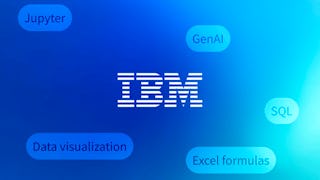 Status: Free TrialFree TrialStatus: AI skillsAI skillsI
Status: Free TrialFree TrialStatus: AI skillsAI skillsIIBM
Skills you'll gain: Exploratory Data Analysis, Data Storytelling, Dashboard, Data Visualization Software, Plotly, Data Visualization, Data Presentation, Interactive Data Visualization, Generative AI, Model Evaluation, SQL, Data Transformation, Data Analysis, Statistical Visualization, IBM Cognos Analytics, Excel Formulas, Professional Networking, Data Import/Export, Microsoft Excel, Python Programming
Build toward a degree
4.6·Rating, 4.6 out of 5 stars97K reviewsBeginner · Professional Certificate · 3 - 6 Months
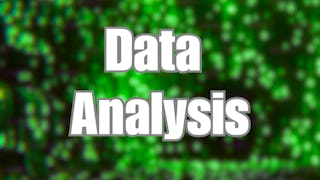 Status: Free TrialFree TrialU
Status: Free TrialFree TrialUUniversity of Colorado Boulder
Skills you'll gain: Unsupervised Learning, Regression Analysis, Classification Algorithms, Dimensionality Reduction, Data Analysis, Anomaly Detection, Supervised Learning, Model Evaluation, Statistical Analysis, Analytics, Logistic Regression, Data Preprocessing, Predictive Modeling, Applied Machine Learning, Statistical Modeling, Machine Learning Methods, Data Mining, Machine Learning Algorithms, Exploratory Data Analysis, Machine Learning
4.7·Rating, 4.7 out of 5 stars28 reviewsIntermediate · Specialization · 3 - 6 Months
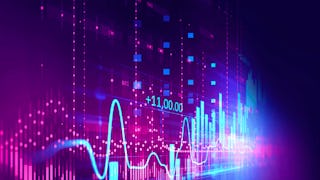 Status: Free TrialFree TrialU
Status: Free TrialFree TrialUUniversity of Pennsylvania
Skills you'll gain: Matplotlib, Data Analysis, Pandas (Python Package), Data Visualization, Data Science, Data Cleansing, Pivot Tables And Charts, Data Visualization Software, Data Preprocessing, Data Manipulation, Scatter Plots, NumPy, Exploratory Data Analysis, Jupyter, Data Import/Export, Histogram, Python Programming, Data Structures, Programming Principles
4.5·Rating, 4.5 out of 5 stars429 reviewsBeginner · Course · 1 - 4 Weeks
What brings you to Coursera today?
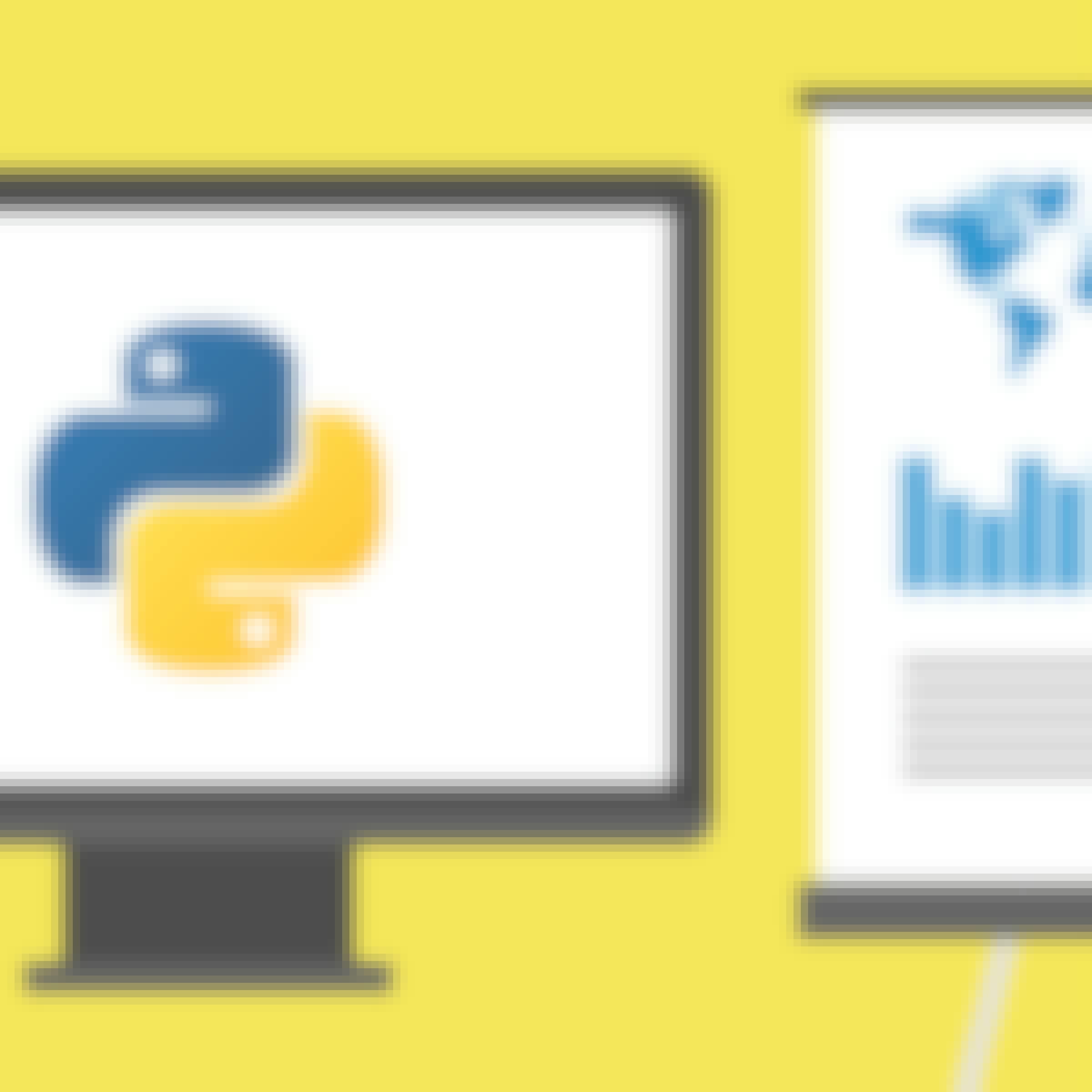 Status: Free TrialFree Trial
Status: Free TrialFree TrialSkills you'll gain: Data Visualization Software, Plotly, Data Visualization, Dashboard, Interactive Data Visualization, Matplotlib, Seaborn, Data Presentation, Data Analysis, Geospatial Information and Technology, Pandas (Python Package), Scatter Plots, Histogram, Heat Maps, Box Plots, Jupyter, Python Programming, Data Manipulation
4.5·Rating, 4.5 out of 5 stars12K reviewsIntermediate · Course · 1 - 3 Months
 Status: Free TrialFree TrialU
Status: Free TrialFree TrialUUniversity of Michigan
Skills you'll gain: Statistical Hypothesis Testing, Sampling (Statistics), Statistical Modeling, Statistical Methods, Statistical Inference, Bayesian Statistics, Data Visualization, Statistics, Matplotlib, Statistical Visualization, Statistical Software, Probability & Statistics, Model Evaluation, Statistical Analysis, Jupyter, Statistical Programming, Statistical Machine Learning, Regression Analysis, Data Visualization Software, Python Programming
4.6·Rating, 4.6 out of 5 stars3.3K reviewsBeginner · Specialization · 1 - 3 Months
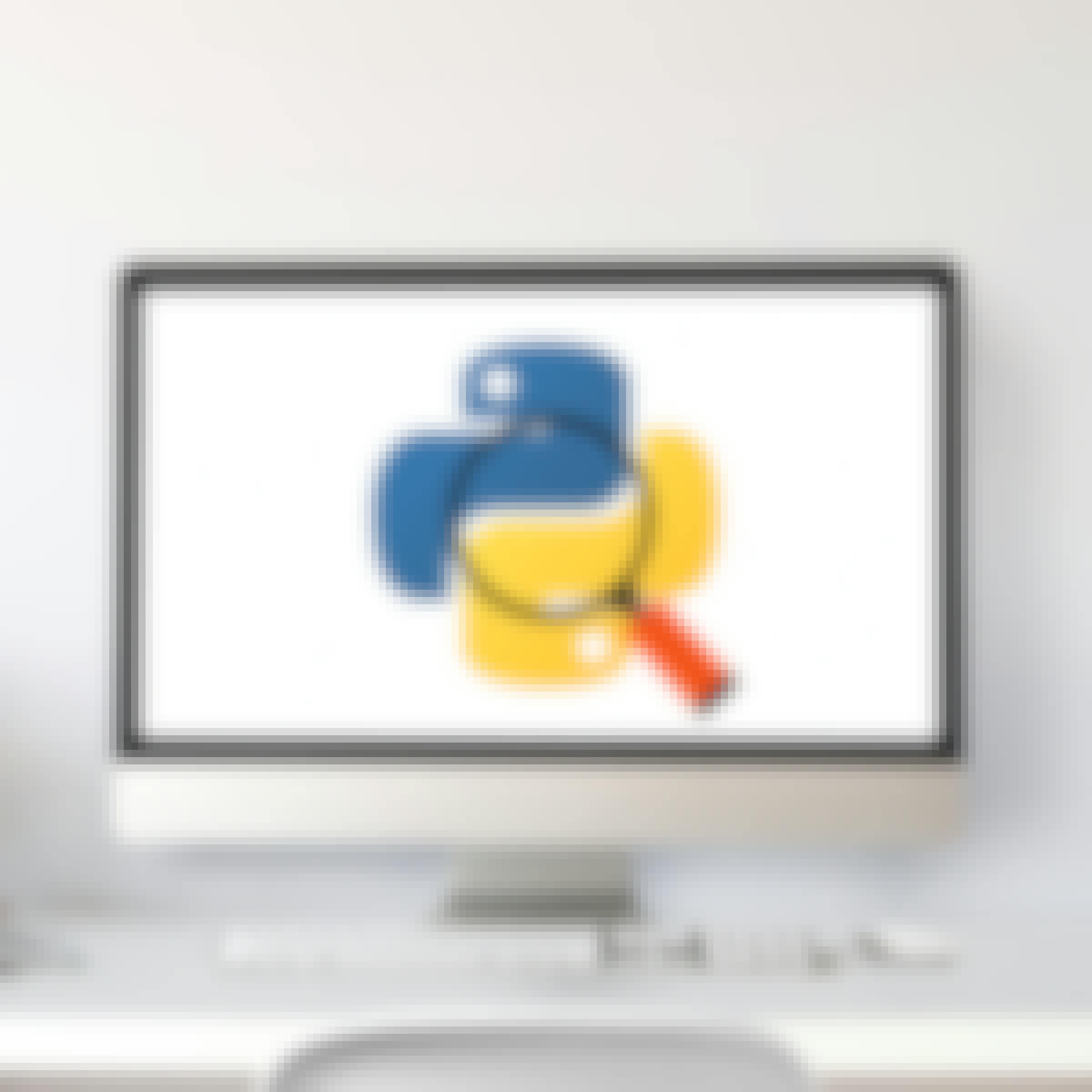 Status: Free TrialFree Trial
Status: Free TrialFree TrialSkills you'll gain: Dashboard, Pandas (Python Package), Data Presentation, Web Scraping, Jupyter, Data Analysis, Data Science, Data Processing, Data Manipulation, Python Programming, Data Collection
4.5·Rating, 4.5 out of 5 stars4.8K reviewsIntermediate · Course · 1 - 4 Weeks
 Status: Free TrialFree Trial
Status: Free TrialFree TrialSkills you'll gain: Pandas (Python Package), Data Import/Export, Matplotlib, Pivot Tables And Charts, Jupyter, Data Visualization Software, Data Visualization, Microsoft Excel, Data Analysis, Text Mining, Data Manipulation, Data Cleansing, NumPy, Data Analysis Software, Data Wrangling, Time Series Analysis and Forecasting, Python Programming, Data Preprocessing, Data Structures, Development Environment
4.7·Rating, 4.7 out of 5 stars41 reviewsIntermediate · Specialization · 3 - 6 Months
 Status: NewNewStatus: Free TrialFree Trial
Status: NewNewStatus: Free TrialFree TrialSkills you'll gain: Pandas (Python Package), Pivot Tables And Charts, Data Manipulation, Data Import/Export, NumPy, Time Series Analysis and Forecasting, Business Reporting, Jupyter, Data Wrangling, Microsoft Excel, Data Transformation, Matplotlib, Data Analysis, Data Cleansing, Data Preprocessing, Analytics, Data Processing, Management Reporting, Business Analytics, Python Programming
Beginner · Specialization · 1 - 3 Months
 Status: Free TrialFree TrialG
Status: Free TrialFree TrialGGoogle
Skills you'll gain: Object Oriented Programming (OOP), Data Structures, Python Programming, NumPy, Pandas (Python Package), Data Analysis, Scripting, Data Manipulation, Data Visualization, Algorithms, Debugging
4.8·Rating, 4.8 out of 5 stars1.8K reviewsAdvanced · Course · 1 - 3 Months
What brings you to Coursera today?
In summary, here are 10 of our most popular data analysis with python courses
- Data Analysis with Python: IBM
- Python for Data Science, AI & Development: IBM
- Google Data Analysis with Python: Google
- IBM Data Analyst: IBM
- Data Analysis with Python: University of Colorado Boulder
- Data Analysis Using Python: University of Pennsylvania
- Data Visualization with Python: IBM
- Statistics with Python: University of Michigan
- Python Project for Data Science: IBM
- Data Analysis with Pandas and Python: Packt
Frequently Asked Questions about Data Analysis With Python
Data analysis with Python is the process of using Python programming to inspect, clean, transform, and model data with the goal of discovering useful information, informing conclusions, and supporting decision-making. Python is particularly important in this field due to its simplicity and versatility, making it accessible for beginners while also powerful enough for advanced users. Its extensive libraries, such as Pandas, NumPy, and Matplotlib, provide tools for data manipulation and visualization, which are essential for effective analysis. In today's data-driven world, the ability to analyze data effectively can lead to better business strategies, improved customer experiences, and enhanced operational efficiency.
To excel in data analysis with Python, you should focus on developing a range of skills. Key competencies include proficiency in Python programming, understanding of data manipulation libraries like Pandas and NumPy, and familiarity with data visualization tools such as Matplotlib and Seaborn. Additionally, knowledge of statistical analysis, data cleaning techniques, and experience with databases (SQL) are beneficial. Soft skills like critical thinking, problem-solving, and effective communication are also essential, as they enable you to convey your findings clearly to non-technical stakeholders.
There are several excellent online courses available for learning data analysis with Python. For a comprehensive learning experience, consider the Data Analysis with Python Specialization which covers essential concepts and practical applications. Alternatively, the Google Data Analysis with Python Specialization offers insights from industry leaders. For those looking to focus on data visualization, the Data Analysis and Visualization with Python course is a great choice.
Yes. You can start learning data analysis with Python on Coursera for free in two ways:
- Preview the first module of many data analysis with Python courses at no cost. This includes video lessons, readings, graded assignments, and Coursera Coach (where available).
- Start a 7-day free trial for Specializations or Coursera Plus. This gives you full access to all course content across eligible programs within the timeframe of your trial.
If you want to keep learning, earn a certificate in data analysis with Python, or unlock full course access after the preview or trial, you can upgrade or apply for financial aid.
To learn data analysis with Python, start by selecting a course that matches your current skill level and learning goals. Begin with foundational courses that introduce Python programming and basic data analysis concepts. As you progress, engage with hands-on projects to apply what you've learned. Utilize online resources, such as forums and study groups, to enhance your understanding. Consistent practice and real-world application of skills will reinforce your learning and build confidence in your abilities.
Typical topics covered in data analysis with Python courses include data manipulation with Pandas, data visualization techniques using Matplotlib and Seaborn, statistical analysis, and data cleaning methods. Courses often explore how to work with different data formats, perform exploratory data analysis (EDA), and create meaningful visualizations to communicate insights. Additionally, some courses may cover advanced topics like machine learning and big data analysis, providing a well-rounded understanding of the field.
For training and upskilling employees in data analysis with Python, consider courses that provide practical, hands-on experience. The Data Analysis with Python Project is an excellent choice, as it allows learners to apply their skills in a real-world context. Additionally, the Data Analysis with Pandas and Python Specialization offers a structured approach to learning essential data analysis techniques, making it suitable for workforce development.










